How to mine Ethereum (ETH)
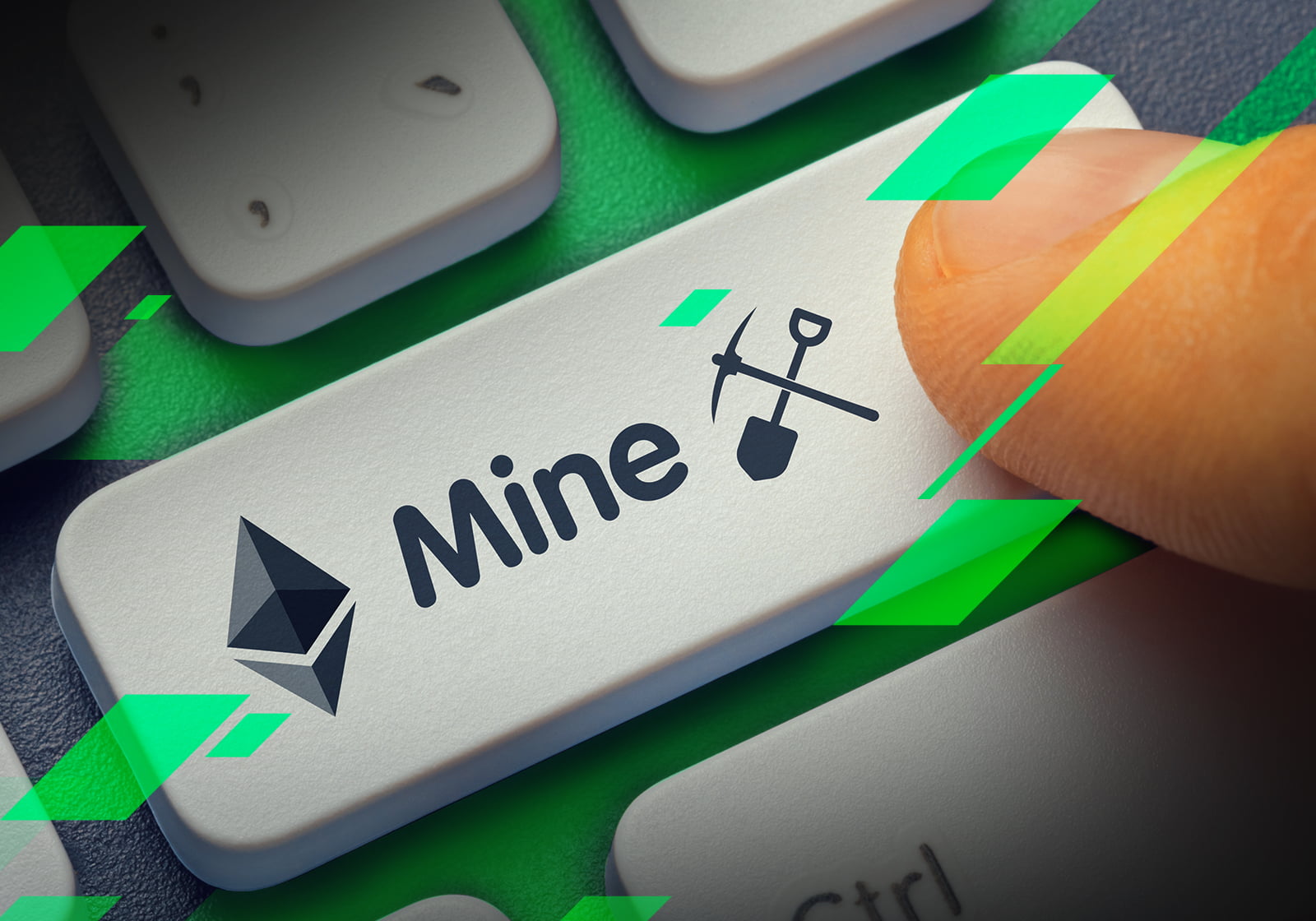
Ethereum was created in 2015 as a platform for developing decentralised applications. The platform's eponymous internal cryptocurrency became the second-most-popular cryptocurrency after Bitcoin. The relative simplicity of Ethereum mining, its widespread presence and its popularity have led many people to wonder how to mine Ethereum.
We set up a small Bitcoin and Ethereum mining operation... that is now amazingly making a lot of money. — Abigail Johnson
Name | Ethereum |
Ticker | ETH |
Price (as of 07/06/2023) | $1,876.94 |
Market cap (as of 07/06/2023) | $225,629,520,440 |
Circulating supply (as of 07/06/2023) | 20,231,505 ETH |
Consensus algorithm | Proof-of-work |
Website |
What is Ethereum mining?
Ethereum mining is a process that verifies new transactions in the Ethereum blockchain and their addition to blocks combined with issuing the crypto coins.
It's based on solving mathematical equations on the appropriate hardware. The first miner to solve an equation gets a 2 ETH reward per block as well as all commissions for the transaction added to the block. Although only a total of 18 million new ETH can be crafted a year, there is no limit on the total number of coins that can be issued, unlike Bitcoin.
How to mine Ethereum using different methods
There are several ways to mine ETH. No matter which one you choose, you'll need an Ethereum wallet before you get started.
- Joining an ETH mining pool
- Cloud mining
- Solo mining
- Creating your own Ethereum mining pool
We won't review how to create your own Ethereum mining pool since competition in this area is very high, and doing so requires extensive investment. Instead, we'll look at more affordable methods.
Mining pools
Due to the high number of ETH miners, the more complex the task is, the higher the reward for a block is. In these conditions, every miner has a relatively low chance of solving the equation and getting the reward. So-called mining pools solve this problem. They're created to combine the computing power of several individual miners, to reduce random factors and to upgrade mining efficiency.
A mining pool is a server that breaks down a mathematical equation into smaller equations and distributes it among connected computers. When pool participants solve the equation together, the reward is distributed among them, as well.
How to join a mining pool Ethereum
The most popular Ethereum mining pools are Ethermine, Sparkpool, F2pool, Nanopool and 2miners. When choosing a mining pool, pay attention to the:
- Pool hashrate
- Pool reputation
- Commission rate
- Minimum payout amount and frequency
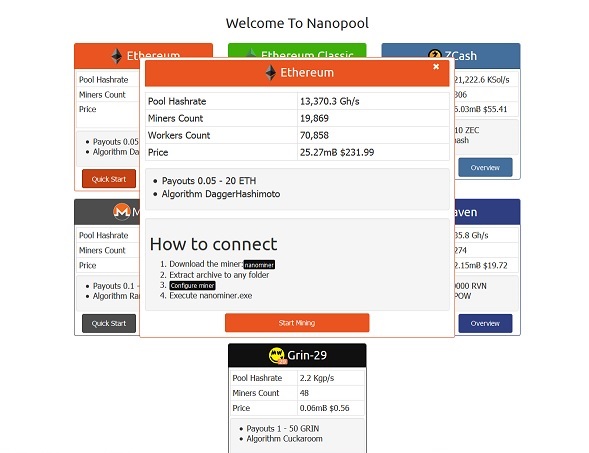
It's quite easy to join a mining pool, even as a newcomer. Most large pools have detailed instructions on how to configure your mining software and connect to the pool.
Cloud mining
Cloud mining leases mining equipment. In this case, the leasing company (lessor) owns the equipment and maintains it. The lessee pays for the time the equipment works. All the coins mined during the lease time are transferred to the lessee's wallet. While this comes with certain benefits — such as not needing to buy, install or maintain equipment and no risk of damaging it — this method also has some definite downsides. The main disadvantage of cloud mining is the risk of a decrease in Ethereum's price, which would make a lease contract a loss. The other thing you should keep in mind is the high risk of fraud. In any case, take time to find the most reliable service. If you want to test cloud mining for free, try the new Cloud Miner tool on the StormGain platform.
Solo mining
If you want to learn how to mine Ethereum solo, think twice. Mining pools appeared for a good reason. In the current competitive environment, you would have to invest a lot of money in equipment just to have a chance of getting a reward for an Ethereum block.
The average time it takes a solo miner to find a block can reach up to several weeks or even months.
How to mine Ethereum on Windows
For successful Ethereum mining on Windows, you'll need to have Windows 7 64-bit or a later version. These are the steps to start mining:
- Check your hardware. First, you'll need a PC or mining rig with 4GB of GPU memory or more. Second, you'll need at least 4GB of system RAM. And last but not least, you'll need a stable, consistent internet connection.
- Install your GPU drivers. If you're an AMD user, go to their website, download the current driver version for your GPU and install it. Alternatively, if you plan to use your GPU for mining ONLY, you can download a specialised driver. Nvidia GeForce users can get a current driver version from Nvidia's website. After installing the driver, don't forget to reboot your hardware.
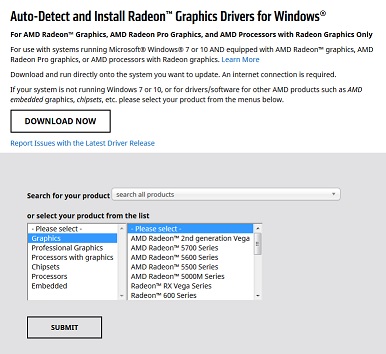
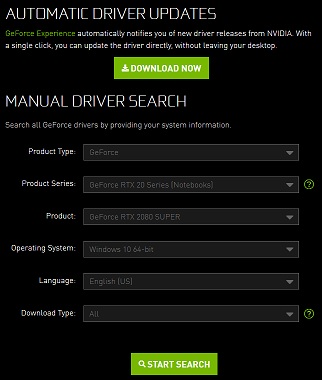
- Get an Ethereum wallet. Probably the easiest way to do this is on websites like MyEtherWallet.com or at a cryptocurrency exchange like Binance or StormGain. Keep in mind that some exchanges do not allow small deposits or deposits from mining pools. Once you've registered, don't forget to save your private key!
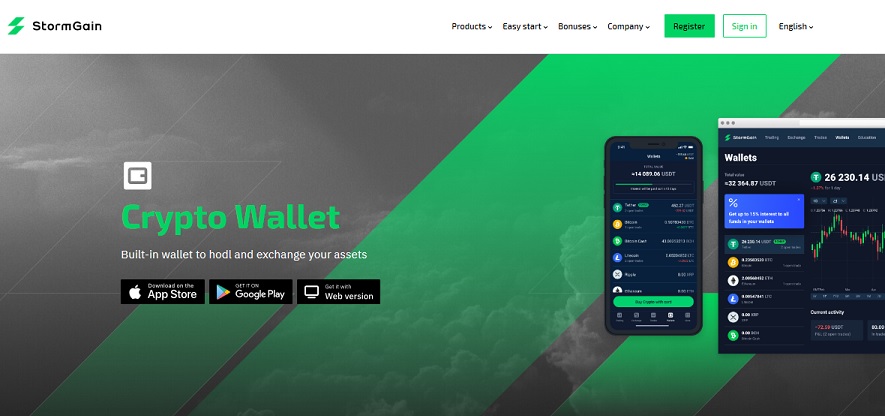
- Download mining software. There are many Ethereum mining programmes. We review the most popular ones further in this article.
- Modify your Windows settings. Set the virtual memory size to at least 16,384 MB. Go to Windows Power Settings and turn off Sleep mode. Go to your Windows Update settings and turn it off. If you use Windows Defender or other antivirus software, add an exception to it so that it does not interfere with your mining programme.
- Choose a mining pool according to your preferences.
- Edit your mining programme's .bat file according to your chosen mining pool's instructions.
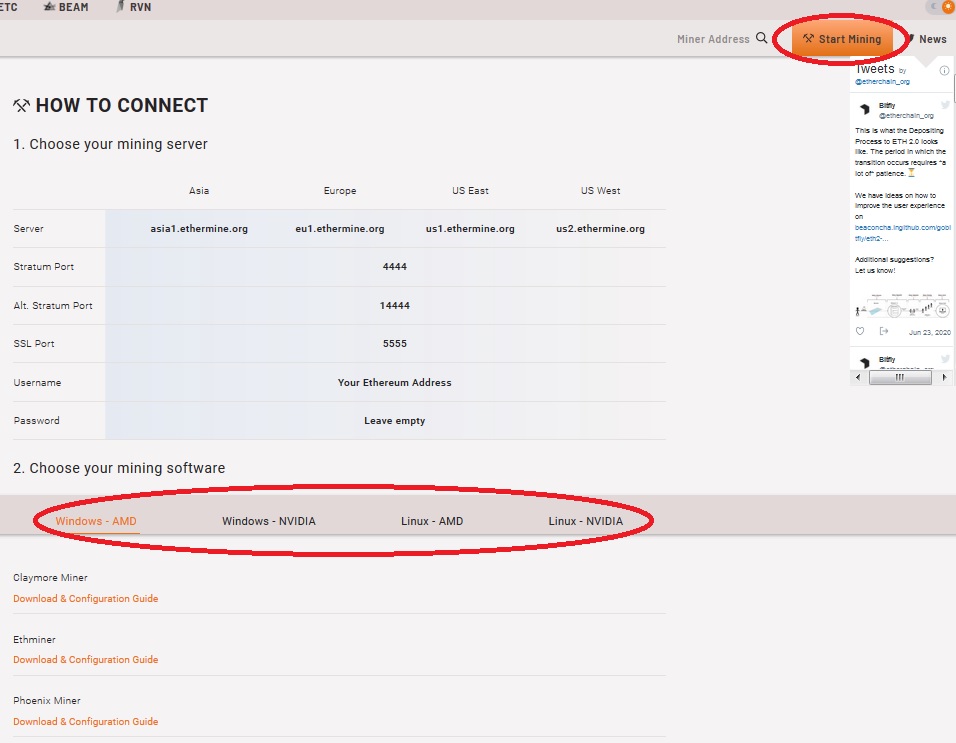
- Launch the edited .bat file to begin mining.
How to mine Ethereum on Mac
Mining Ethereum on a Mac is commonly considered ineffective and not really worthwhile. Most popular Ethereum mining software programmes don't have Mac versions. Nevertheless, it is still possible by using Graphical User Interface (GUI) miners like Minergate. To mine Ethereum with Minergate, you need to:
- Download the software from their website.
- Register an account using your email.
- Log into the software with your account.
- Start mining Ethereum.
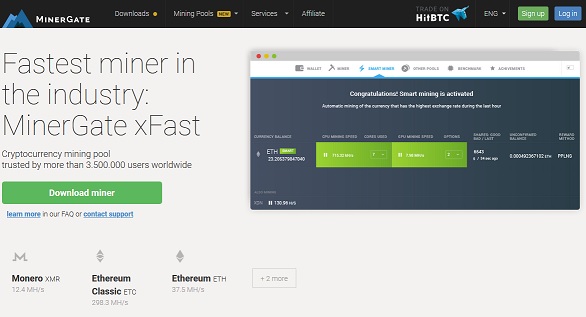
Unfortunately, even with Minergate, GPU mining on Mac is still unavailable.
How to make passive income with Ethereum
Ethereum offers various avenues for generating passive income. Let's delve into some popular methods:
- Staking involves locking one's funds on a Proof-of-Stake (PoS) blockchain, such as Ethereum, to validate transactions and earn rewards. By staking ETH, individuals contribute to the network's security and receive rewards in the form of ETH or other tokens. Ethereum staking can be an attractive way to earn passive income, but it may require a substantial investment. The new PoS version of Ethereum mandates a minimum of 32 ETH (approximately $50,000) to run a full validator node and participate in staking.
- Hodling, a term derived from the word "hold", refers to holding onto Ethereum for long-term investment purposes. By maintaining a steadfast position in Ether, investors anticipate future price increases, enabling them to sell for a profit. While this approach doesn't guarantee immediate returns, it has proven to be a popular and straightforward method of earning passive income from cryptocurrency. Given Ethereum's remarkable growth and status as one of the most valuable cryptocurrencies globally, the likelihood of future price appreciation is high. However, it's important to acknowledge the inherent volatility of cryptocurrencies and invest only how much one is comfortable with potentially losing.
- Automated trading involves utilising bots to execute Ether trades automatically. These software programmes employ pre-programmed algorithms to buy and sell cryptocurrencies based on predefined market conditions, such as price fluctuations or volume changes. Platforms like Coinrule and Bitsgap offer automated trading capabilities, allowing users to set customised trading rules or use premade templates.
- Lending provides an avenue for investors to generate passive income by loaning their ETH to borrowers at attractive interest rates. Centralised and decentralised lending platforms facilitate this practice. Centralised platforms handle technical aspects like security, data storage, and authentication, allowing investors to optimise yield. However, they are more vulnerable to hacks and breaches. Decentralised lending platforms offer enhanced security, transparency, and customisation options, enabling experienced investors to maximise profits. Nonetheless, decentralised platforms often require a higher level of technical expertise, and interest rates may be relatively lower.
- Liquidity mining, also known as yield farming, allows individuals to earn rewards by providing their ETH or other assets to liquidity pools on decentralised exchanges like Yearn.finance, SushiSwap, and Uniswap. Liquidity providers receive a share of the trading fees paid by users who trade cryptocurrencies within the pool. The reward amount depends on the liquidity provided by the farmer in comparison to the overall pool liquidity.
These methods present enticing opportunities for passive income with Ethereum. However, it's crucial to carefully assess the associated risks and rewards before engaging in any investment activity.
Profitability
When calculating the profitability of Ethereum mining, remember that there are plans for the Ethereum blockchain to switch to a Proof-of-Stake consensus algorithm at a currently unknown date. It will no longer be mineable after that.
How to calculate profitability
The profitability of Ethereum mining depends on too many variables to be calculated accurately. However, you can still calculate the current estimated profit. To do so, you need to know the hashrate of your mining hardware, its power consumption and power cost. Simply input these numbers into an online calculator, and you'll get your estimated profit. Don't forget about such important variables as Ethereum price fluctuations and increasing mining difficulty.
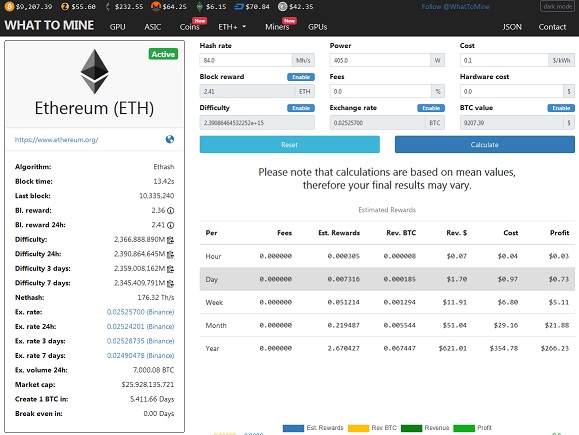
How long does it take to mine 1 Ethereum?
It depends on the mining equipment's hashrate and constantly changing difficulty. Still, even with a powerful and expensive AMD Radeon VII GPU and assuming the current mining difficulty stays the same, it'll take about half a year to mine 1 Ethereum.
ETH mining software
Special mining software is an essential tool for Ethereum mining. Here are 3 of the most popular programmes for that.
ETHminer
ETHminer is an established Ethash GPU mining software. It enables you to mine all coins based on the Ethash algorithm (Ethereum, Ethereum Classic, Expanse, Musicoin, etc.). You can download the programme and find a guide to it on Github.com.
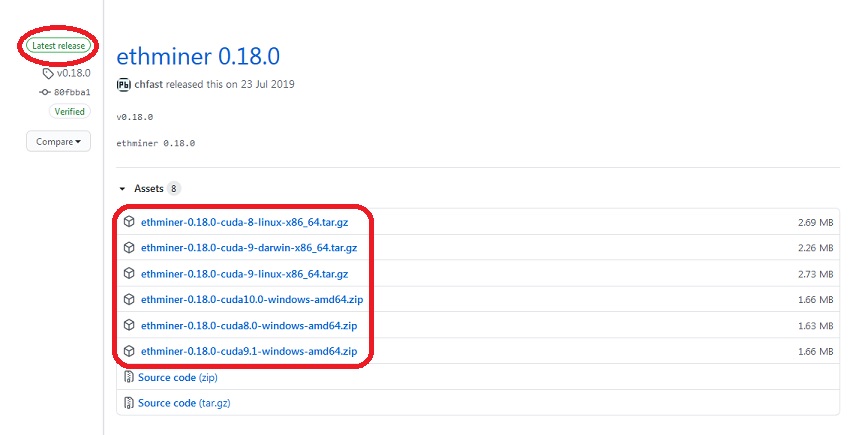
Claymore Miner
This is another of the most popular Ethereum miners. Unlike the other miners listed here, it supports the so-called ‘dual mining' mode, which allows users to simultaneously mine Ethereum and another coin from a limited list (such as Decred or Siacoin) without losing Ethereum mining speed. A guide and download link can be found here.
Phoenix Miner
Phoenix Miner is a relatively new Ethereum mining programme that is considered faster and more stable than the previous miner. The latest version supports dual mining, making it possible to mine Ethereum and Ubiq (UBQ) simultaneously. Click here to find the guide and download link.
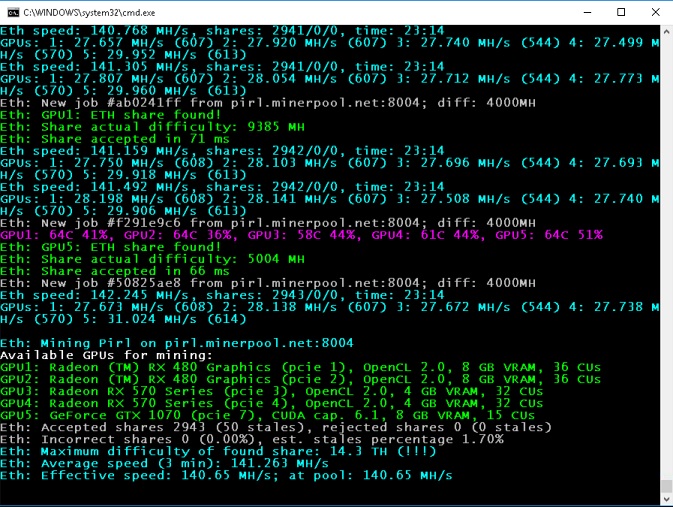
How to make money with Ethereum mining
Currently, Ethereum mining may not be very profitable. However, cryptocurrency prices are subject to significant fluctuations, which means it can be a good investment and a decent way of generating passive income.
But miners always try to use various tricks to lower mining costs. For example, they may look for cheaper electricity or even use the excess heat from mining equipment to heat their homes.
How to mine Ethereum faster
Faster Ethereum mining is achieved first and foremost by increasing the hashrate. The basic way to increase the hashrate is to purchase additional mining hardware. As previously mentioned, not all mining programmes are the same. Some of them, like Phoenix Miner, are faster and more efficient. But there are also ASICs (Application Specific Integrated Circuits) created for Ethash mining, which are far more efficient at Ethereum mining than GPUs. However, they are expensive and may become useless after the planned switch to a Proof-of-Stake algorithm. That said, purchasing them is quite risky.
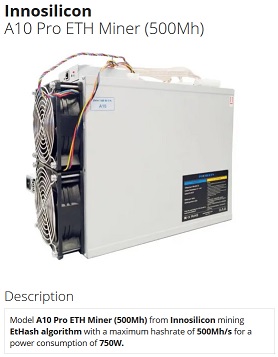
How to sell mined Ethereum
Miners sometimes want to sell their hard-earned Ethereum for one reason or another. It's not hard to do. You can exchange Ethereum for other cryptocurrencies on most cryptocurrency exchanges. All you need to do is to find one with the desired cryptocurrency pairing, create an account, deposit your ETH and exchange it.
To sell ETH for fiat money, you need to find an exchange that supports pairings with the desired fiat currency, such as Coinbase, Kraken or StormGain. After doing so, you can exchange your Ethereum for fiat money and withdraw it if you need to.
Another way to do it is to use an online exchange service or sell it directly to another person. In either case, be aware of exchange and withdrawal fees and the risk of fraud if you sell directly.
Tags
Try our Bitcoin Cloud Miner and get additional crypto rewards based on your trading volume. It's immediately available upon registration.
Try our Bitcoin Cloud Miner and get additional crypto rewards based on your trading volume. It's immediately available upon registration.



